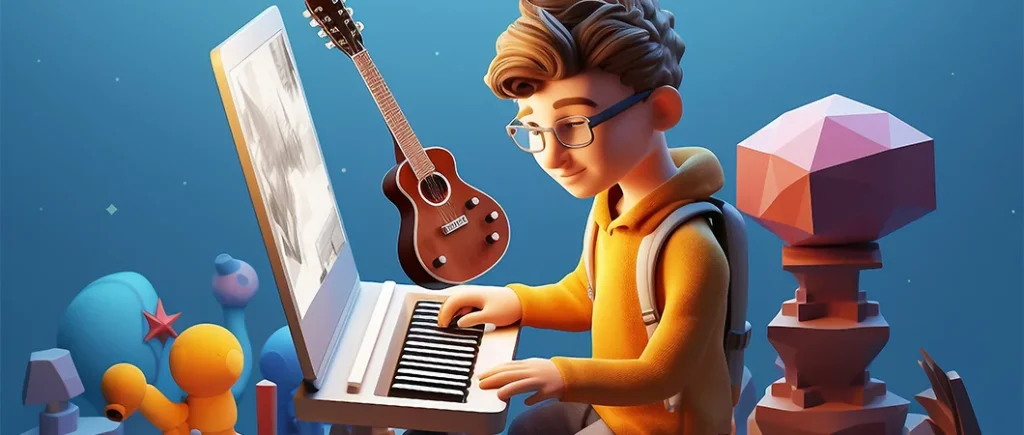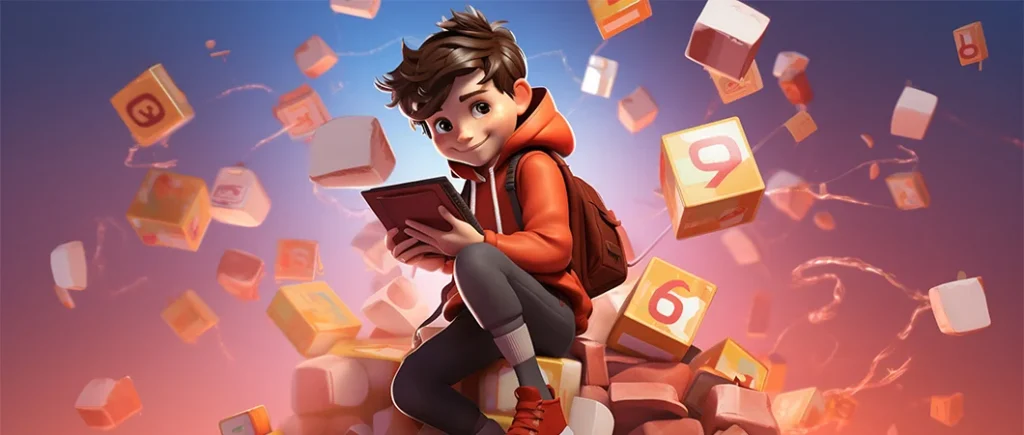
The Best 3D Animation Studio in Turkey
December 9, 2023
3D Animation Pipeline : A Step-by-Step Guide
December 26, 2023Using Animation in E-learning
Animation in E-learning can help learners to understand, remember, and apply various concepts, skills, or scenarios. Animation is not just for entertainment or fun; and it can also be a powerful tool for E-Learning. It makes learning more engaging, interactive, and enjoyable.
In this blog post, we will explore how to use animation in education to enhance learning outcomes and what are the different types of animation in E-learning that you can choose from.
Table of Contents
What is animation in E-learning?
Animation in elearning refers to the use of motion graphics, video, or audio to create dynamic and immersive learning content.
It is a perfect tool for explaining complex or abstract concepts, illustrating scenarios, demonstrating skills, or telling stories.
Animation can also appeal to different learning styles, such as visual, auditory, or kinesthetic.
Why should you use animation in E-learning?
There are many benefits of using animation in E-learning, such as:
- The main Importance of animation in E-learning is capturing the attention of the learners and motivate them to explore the content further.
- It creates a positive emotional response and increases the retention of information.
- Simplifies complex or abstract concepts and makes them easier to understand.
- Provides multiple perspectives and representations of the same concept, which can help learners grasp the underlying principles and logic.
- Shows the process and outcome of an action or a phenomenon. This can help learners to see the cause-and-effect relationships.
- Also, shows the steps and procedures of a skill or a task, which can help learners to acquire and practice the skill.
- Animation in E-learning can create realistic and relevant scenarios and situations, which can help learners apply their knowledge and skills to real-world contexts.
- Creates immersive and interactive environments, and learners can explore and experiment with different options and solutions.

What are the types of animation in E-Learning?
There are different types of animation in E-learning, each with its advantages and disadvantages. Here are some of the most common types of animation for e-education and how they can be used:
2D Animation
2D animation uses vector-based graphics to create motion and movement. It can be used to create engaging and colorful learning content that can appeal to learners of all ages and backgrounds.
Also, this approach is used to explain concepts, show processes, or tell stories that can enhance the understanding and retention of information.
For example, it is perfect for creating:
- Interactive Simulations: 2D animation represents dynamic systems or processes.
- Historical or Cultural Depictions: They can represent history and cultural narratives by recreating significant events or depicting traditional stories.
- Gamified Learning: Gamification elements can be incorporated into animations to create an interactive and motivating learning experience. By introducing challenges, rewards, and progress tracking, learners can feel a sense of accomplishment, increasing their engagement and retention of information.
3D Animation
3D animation can be used to create realistic and detailed learning content that can simulate real-world scenarios and situations. It enhances the application and transfer of knowledge and skills.
For example, it can be used to create:
- Characters: This type of animation enhances the learning process by performing characters that describe the subject’s procedure, such as a medical procedure.
- Visualizing Abstract Concepts: Abstract or intangible concepts can be challenging to grasp, especially in educational contexts. Animation provides a means to visually represent these concepts, making them more concrete and accessible to learners.
- Virtual Environments: These environments can enhance understanding of a place or ecosystem by virtual figures.
- Simulation: It can show the results of an action.
Motion Graphics
Motion graphic does not focus on characters or storylines but on the ability to move graphic elements, shapes, and text. This type of animation is commonly used for things like television promotions, explainer videos that summarize the main points, and animated logos.
It can capture the attention of the audience and convey a message.
How to use animation in eLearning?
You need to consider the following factors:
Learning Objectives
Integrate the animation with the curriculum. The animation in E-learning should align with the learning outcomes and the assessment criteria.
Avoid using animation that is not relevant, appropriate, or consistent with the learning objective.
Target Audience
You need to know the characteristics and preferences of your target audience. Consider their age, background, prior knowledge, motivation, and learning style.
Design the animation according to the needs and expectations of your target audience.
Content
You need to select the content that is suitable for animation in E-learning and that can benefit from the use of motion and movement.
Do not use animation for content that is already clear, simple, or static or that can be better presented using other media, such as text, images, or audio.
Types of Animation in E-learning
You need to choose the animation that matches the content and the learning objectives. They can give the message effectively and efficiently.
Consider the advantages and disadvantages of each type of animation.
Duration of the Animation
You need to keep the animation short, and that it covers the main points and highlights.
Avoid using animation that is too long or too short or that is redundant or irrelevant.
The duration of animation in e-learning can vary depending on several factors, such as:
- Content Complexity: The complexity of the content being presented plays an important role in determining the appropriate duration of an animation in E-learning.
- Attention Span: It’s important to consider the attention span of the target audience when determining the duration of an animation.
- Bite-Sized Learning: The trend in e-learning is moving towards bite-sized ad micro-learning content, which consists of short, focused bursts of information.
- Learning Objectives: If the animation aims to introduce a new concept or provide a quick overview, a shorter duration may be appropriate.
- Engagement and Interactivity: Interactive features such as quizzes, clickable elements, or opportunities for learner input can increase learner participation and extend the overall duration of the animation in E-learning.
- Context and Delivery Method: The context in which the animation will be delivered should also be considered. If the animation is part of a larger e-learning course or module, the overall duration of the course should be taken into account to ensure a balanced and cohesive learning experience.
Interactivity of animation
You need to make the animation interactive, and that allows the learners to control, manipulate, or respond to the animation.

Utilizing animation for E-learning to get optimal outcomes
Animation is a versatile and effective tool that can enhance the E-learning experience and outcomes. utilizing animation for E-learning can help learners and students to learn better, faster, and more enjoyable. It is ideal for creating different types of learning content, such as 2D animation, 3D animation, or motion graphics.
Are you looking for a way to make your E-learning courses more engaging, interactive, and effective?
Motion and Potion Studio is a leading studio that specializes in creating animation for different approaches such as 3D animation in advertising and E-learning. We have a team of talented and skilled animators who can create your project based on professional 2D animation and 3D animation pipelines.

